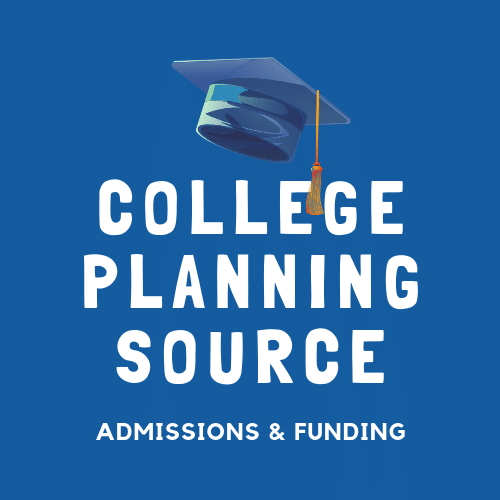
by Christina Waters
Understanding Early Action, Early Decision, and Restrictive Early Action: Making the Right Choice
As the college application season approaches, high school seniors face a multitude of decisions. Among the most important is choosing between various application plans: Early Action (EA), Early Decision (ED), and Restrictive Early Action (REA). Each of these options has distinct characteristics, benefits, and potential drawbacks, and making the right choice requires a careful understanding of each one. This article aims to provide a comprehensive overview to help students and families navigate these options effectively.
1. Early Action (EA)
Definition: Early Action is a non-binding application plan that allows students to apply to a college or university earlier than the regular decision deadline, typically by November 1 or November 15. Students who apply EA usually receive a decision by mid-December.
Key Features:
- Non-Binding: Students are not required to attend if accepted. They can apply to multiple EA schools and still have until May 1 to decide.
- Early Notification: EA applicants receive their admission decision earlier, which can reduce stress and help in planning.
- Flexibility: Students can compare offers from different schools before making a final decision.
Who Should Consider EA:
- Students with strong academic records who are ready to submit their applications by early fall.
- Those who want to keep their options open and compare financial aid packages from multiple schools.
- Students who want the peace of mind that comes with knowing they have an acceptance in hand before the regular decision deadlines.
Pros:
- More time to decide.
- Potential to increase chances of admission at some schools (though this varies).
- Ability to apply to other schools under different plans, including Regular Decision (RD).
Cons:
- Less time to refine applications compared to Regular Decision.
- The EA pool can be competitive, especially at highly selective schools.
2. Early Decision (ED)
Definition: Early Decision is a binding application plan. Students who apply ED commit to attending the college if accepted. Application deadlines are typically in early November, with decisions released in mid-December.
Key Features:
- Binding Agreement: If accepted, the student must withdraw all other college applications and commit to attending the ED school.
- Single Application: Students can only apply ED to one school, though they may apply to other schools under non-binding plans like EA or RD.
- Potential Advantage: Some schools have higher acceptance rates for ED applicants, making it an attractive option for students who are certain about their first-choice college.
Who Should Consider ED:
- Students who have a clear first-choice college and are confident in their academic profile.
- Those who do not need to compare financial aid offers from multiple schools (as ED limits this ability).
- Students looking for a potential admissions boost at their top-choice school.
Pros:
- Demonstrates strong interest in the school, which may positively influence the admissions decision.
- May increase chances of admission at some schools.
Cons:
- Binding commitment limits the ability to compare financial aid packages.
- Pressure to make a final college choice early in the senior year.
- Students cannot back out of the commitment without significant repercussions (except for financial reasons).
Pro-Tip: Check the College’s Net Price Calculator to determine eligibility of Need-Based financial aid before selecting to apply Early Decision
3. Restrictive Early Action (REA) or Single-Choice Early Action (SCEA)
Definition: Restrictive Early Action is a non-binding application plan similar to EA but with additional restrictions. Students applying REA to one school cannot apply ED or EA to any other private institutions, though they may apply to public universities.
Key Features:
- Non-Binding: Like EA, REA is non-binding, meaning students do not have to commit if accepted.
- Limited Application Flexibility: REA typically restricts students from applying EA or ED to other private institutions but allows applications to public universities under EA or RD.
- Decision Timeline: Students applying REA usually receive their admissions decision in mid-December.
Who Should Consider REA:
- Students who are very interested in a particular school but want the flexibility to apply to other colleges without a binding commitment.
- Those who are competitive applicants at highly selective institutions offering REA.
Pros:
- Non-binding, allowing students to make a final decision by May 1.
- Provides an opportunity to apply early without the commitment of ED.
- Potentially less competitive pool compared to RD at some schools.
Cons:
- Restricts the ability to apply early to other private institutions.
- May not provide as significant an admissions advantage as ED.
4. How to Make the Right Choice
Choosing between EA, ED, and REA requires a thoughtful assessment of your priorities, readiness, and long-term goals. Here are some key factors to consider:
- College Preference:
- If you have a clear top-choice college where you would unquestionably attend if accepted, ED might be the best option.
- If you’re strongly interested in a particular school but want to keep your options open, consider REA or EA.
- Application Readiness:
- Are your grades, test scores, essays, and recommendations ready for submission by the early deadlines? If so, you might benefit from applying early.
- If you need more time to improve your application or are waiting for senior-year grades or test scores, Regular Decision may be better.
- Financial Considerations:
- If comparing financial aid packages is crucial, EA or REA might be better than ED, as ED limits your ability to compare offers.
- Remember that financial aid is often one of the few valid reasons to decline an ED offer.
- Competitiveness:
- Consider your profile in the context of the schools’ early applicant pools. Some schools have higher acceptance rates for ED or REA, but this is not universal.
- Stress and Decision Timeline:
- Think about whether you’re ready to make a final decision by mid-December. If not, EA or Regular Decision might reduce stress and provide more time for reflection.
- School Policies:
- Research each school’s specific policies for EA, ED, and REA. Some schools may offer only one option, while others might have unique conditions attached to their early plans.
Choosing the right application plan—whether EA, ED, or REA—requires a deep understanding of each option’s implications. Reflect on your college preferences, readiness, financial situation, and long-term goals before deciding. Ultimately, the right choice is one that aligns with your academic ambitions, personal circumstances, and the degree of certainty you have about your top-choice schools.

